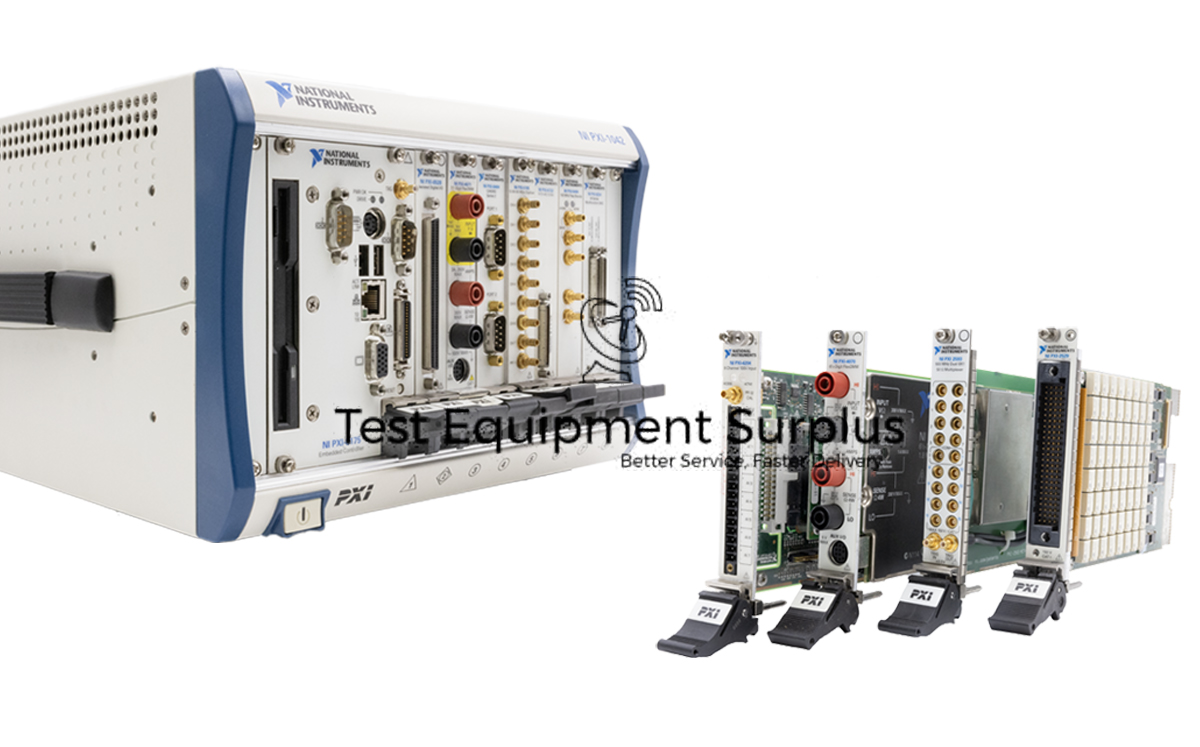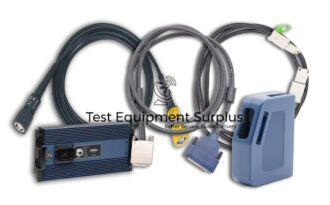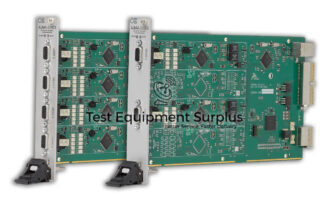Description
The National Instruments PXI-7953 PXI FPGA Module for FlexRIO, with part number 780562-01, is equipped with 128 MB DRAM and a powerful Virtex 5 LX85 FPGA. This module supports complex Hardware Description Languages (HDL) and is capable of handling asynchronous clock spaces, enhancing its flexibility and performance for demanding applications.
Users can integrate HDL code into the LabVIEW environment via XML, which becomes accessible through I/O nodes, providing a seamless development experience. The CLIP Node functionality allows for interfacing with the NI FlexRIO connector module and the onboard FPGA DRAM, supporting multiple clocks and operating asynchronously with the LabVIEW block diagram, which is critical for customizing the behavior of specific hardware features.
In contrast, the IP Integration Node runs in sync with the LabVIEW block diagram and can be accurately simulated alongside the LabVIEW host, ensuring reliable integration of IP cores into the user’s design.
One of the key features of the NI PXI-7953 is its reconfigurability; the device’s resources and logic can be altered based on the FPGA project’s implementation, with the ability to configure the FPGA bitfile in runtime, thus adapting to various user requirements. Furthermore, I/O customization is made possible through interchangeable adapter modules that define the I/O nodes, providing great versatility for different types of signal interfacing.
Despite the announcement of its Mature Status by National Instruments, this robust FPGA module remains available for purchase and repairs through Apex Waves, ensuring long-term support for users of this sophisticated piece of technology.
| Specification | Detail |
|---|---|
| Part Number | 780562-01 |
| Product Name | National Instruments PXI-7953 PXI FPGA Module for FlexRIO |
| Memory | 128 MB DRAM |
| FPGA | Virtex 5 LX85 |
| HD Support | Supports complex HDL, asynchronous clock spaces |
| HDL Integration | Import HDL to LabVIEW via XML, accessible through I/O nodes |
| CLIP Node | Interfaces with NI FlexRIO connector module and FPGA DRAM, supports multiple clocks, runs asynchronously to LabVIEW block diagram |
| IP Integration Node | Runs in accordance with LabVIEW block diagram, can be precisely simulated with LabVIEW host |
| Reconfigurability | Device resources and logic depend on the FPGA project implementation, FPGA bitfile configuration in runtime |
| I/O Customization | Adapter modules define I/O nodes, are interchangeable |
| Mature Status Announcement | Announced by National Instruments, available for purchase and repairs by Apex Waves |
Question 1: What are the capabilities and integration features of the National Instruments PXI-7953 FPGA Module, and how does its mature status affect its availability for purchase and repair?
Answer 1: The NI PXI-7953 module facilitates the integration of Hardware Description Language (HDL) code into the LabVIEW environment through the use of XML, which allows the code to be accessible through I/O nodes for a seamless development experience, and its reconfigurability benefits user requirements by allowing the device’s resources and logic to be altered based on the FPGA project’s implementation, enabling the configuration of the FPGA bitfile at runtime to adapt to various user needs.
Question 2: How does the National Instruments PXI-7953 PXI FPGA Module for FlexRIO’s support for asynchronous clock spaces and 128 MB DRAM contribute to its performance in demanding applications?
Answer 2: The National Instruments PXI-7953 FPGA Module is capable of handling complex Hardware Description Languages with its Virtex 5 LX85 FPGA and 128 MB DRAM, and integrates with the LabVIEW environment through XML for seamless development, offering features like CLIP Node for interfacing with NI FlexRIO connector modules and IP Integration Node for sync with LabVIEW diagrams. Its reconfigurability allows for runtime FPGA bitfile configuration and adaptable I/O customization with interchangeable adapter modules. Despite its Mature Status
Question 3: How does the NI PXI-7953 module facilitate the integration of Hardware Description Language code into the LabVIEW environment, and what are the benefits of its reconfigurability for user requirements?
Answer 3: The National Instruments PXI-7953 PXI FPGA Module for FlexRIO is capable of handling asynchronous clock spaces, enhancing its flexibility and performance for demanding applications, and allows users to integrate HDL code into the LabVIEW environment through the use of XML and I/O nodes, with the CLIP Node functionality enabling the interface with the NI FlexRIO connector module and the onboard FPGA DRAM, supporting multiple clocks and operating asynchronously with the LabVIEW block diagram.
Question 4: What capabilities does the National Instruments PXI-7953 PXI FPGA Module for FlexRIO offer in terms of hardware customization and integration with the LabVIEW environment?
Answer 4: The National Instruments PXI-7953 PXI FPGA Module for FlexRIO offers hardware customization capabilities through its reconfigurable Virtex 5 LX85 FPGA and interchangeable adapter modules for I/O customization, and it integrates with the LabVIEW environment by allowing users to integrate HDL code via XML, utilize CLIP Nodes for interfacing with the NI FlexRIO connector module, and employ IP Integration Nodes for synchronized operation with the LabVIEW block diagram.
Question 5: What capabilities does the National Instruments PXI-7953 PXI FPGA Module for FlexRIO provide for handling asynchronous clock spaces and integrating HDL code into the LabVIEW environment?
Answer 5: The National Instruments PXI-7953 PXI FPGA Module for FlexRIO’s support for asynchronous clock spaces allows it to handle multiple timing domains effectively, while the 128 MB DRAM provides substantial memory for data-intensive operations, both of which are essential for enhancing the module’s flexibility and performance in demanding applications that require complex data processing and high-speed computations.




